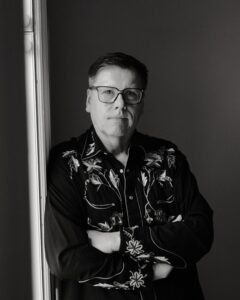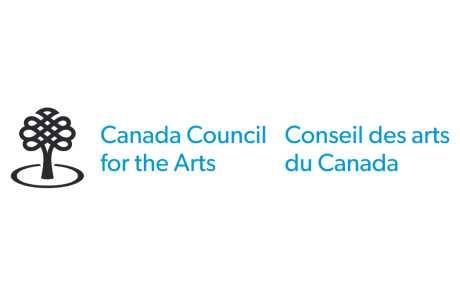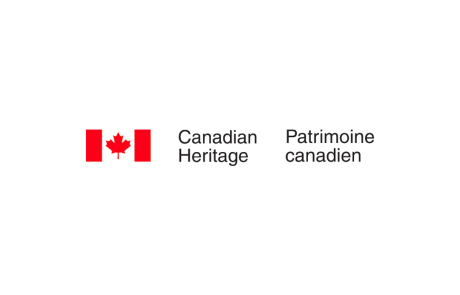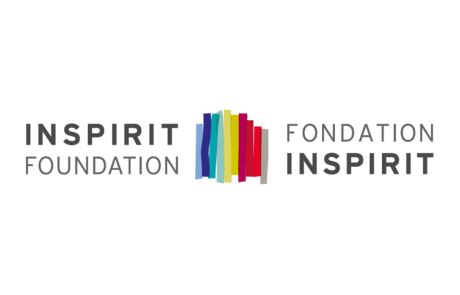The Way Ahead: Surveying the Curatorial Landscape
By Barry Ace
Urban Shaman Gallery March 17th – 19th, 2006 Winnipeg, Manitoba Final Report
The ACC/CCA hosted its first two-day international colloquium to draw attention to pertinent issues within the contemporary Aboriginal arts and curatorial practices that exist across Canada and abroad. The gathering featured prominent Aboriginal and Native American presenters and participants from across Canada and the United States of America. The colloquium was entitled “The Way Ahead: Surveying the Curatorial Landscape” and it was hosted by Urban Shaman Gallery in Winnipeg, Manitoba, on March 16 and 17, 2006. Under the thematic umbrella, “The Way Ahead: Surveying the Curatorial Landscape”, the ACC/CCA brought together curators, scholars, visual artists, critics, art educators, art dealers, art collectors, arts administrators and program officers from the provincial and federal level and the general public, who not only represent our diverse national curatorial and critical communities, but those who are contributing and strengthening the presence of contemporary Aboriginal art. The two day presentations explored existing programs and cited opportunities available for the development, funding, presentation, publication and dissemination of all areas pertinent to contemporary Aboriginal art in Canada and abroad. As well, the colloquium articulated and examined emerging trends and important issues in and around curatorial and critical practices related to such topics as: historical and theoretical perspectives, institutional and non-institutional representation; locating spaces, trends in curatorial practice and the relevance of establishing a greater Aboriginal presence within a contemporary art discourse. Presentations were made by invited guest speakers who’s institutional presence included the Canada Council for the Arts (including the Aboriginal Arts Secretariat, Aboriginal Curatorial Residency Program and Artist-Run-Centres), Ontario Arts Council (including the Aboriginal Program Officer), Canadian Museum of Civilization (Curator of Contemporary Aboriginal Art), National Gallery of Canada (Assistant Curator of Contemporary Art), National Museum of the American Indian (Curator), Artist-Run Centres and Collectives (TRIBE, Urban Shaman, Nation 2 Nation), First Nations University of Canada, Society for Canadian Artists of Native Ancestry (SCANA), Aboriginal International Business Development – International Trade Canada and the ACC membership. Other important attendees who participated in the two day colloquium included representatives from included the Manitoba Arts Council, Winnipeg Art Gallery, ACE Art, Artexte (Francois Dion, Montreal), Walter Phillips Gallery (Curator, Sylvie Gilbert), featured Urban Shaman Gallery solo artist Robert Houle, and the Wah-Sa Gallery to mention a few.
Each session focused on a particular pertinent theme, adding to the body of scholarship, history and appreciation of Aboriginal art and artists in Canada, as well as strengthening the voice of those committed to the field. Roundtable discussions and open forums prompted lively discussion among participants to share their professional experiences, research and ideas as well as facilitating networking opportunities that will continue to forge our collective way ahead. The gathering unequivocally heightened the profile of our intertwined communities that will clearly have residual effects in influencing improvements to Aboriginal arts policy and programs, and also acknowledging and reaffirming the continued commitment to our communities’ contribution and support towards developing our own voice in the canon of critical writing and enhance opportunities for exhibition.
The first day featured presentations that were organized into specific thematic panel discussions that located contemporary Aboriginal arts within a past, present and future context. Past Present: Mapping the Contemporary provided an historical and contemporary overview of the contributions made by Aboriginal curators (such as Tom Hill) with regards to the development of Aboriginal arts policy and the emergence of significant cultural programming within many arts institutions. The session also included a history of the formation and development the Society of Canadian Artists of Native Ancestry (Alfred Youngman), which has contributed to many important developments for contemporary Aboriginal arts and curatorial practice.
Here and Now: Locating Outer Spaces identified artist-run centres, art collectives and organizations whose mandates focus on Aboriginal artistic expression. Tribe Inc. (Lori Blondeau, Director), and Urban Shaman Gallery (Steve Loft, Director) discussed the journey and experiences their organizations have encountered within the context of a local, provincial and national milieu. Two other organizations, SAKEWEWAK (Lynne Acoose) and SYANA, offered their insights into the opportunities and challenges facing the often tenuous relationship and positioning of artist-run-centres in the regions.
Present Future: Contemporary Collections and Institutions included presentations by institutions that collect and exhibit contemporary Aboriginal art. The Indian and Inuit Art Centres of Indian and Northern Affairs Canada (INAC)(former Acting Chief, Barry Ace) spoke on the history of one of the last bastions of the cultural programs at the INAC. As the INAC works towards a process of devolution to Indian and Inuit governments, the future of these important historical programs, fine art collections and resources is becoming of paramount significance to the Aboriginal curatorial and artistic communities. The Bill Reid Foundation who is in the process of developing a proposal for a National Aboriginal Art Gallery to be completed by 2010 in Vancouver. The history of the Bill Reid Foundation, political and private sector advocacy, advisory committee and consultation process, and the institutional vision of the organization offered interesting perspectives and insight for the future of the Aboriginal curatorial and critical community. The Canadian Museum of Civilization (Lee Ann Martin, Curator Of Contemporary Aboriginal Art) and the National Gallery of Canada (Greg Hill, Associate Curator, Contemporary Art) are two national institutions that have been proactive in the hiring of Aboriginal curators, developmental training and mentoring initiatives, and lobbying their respective institutions for increased acquisition funding to purchase and exhibit Aboriginal art. These two principle art institutions offered insight into the current state of Aboriginal art policy within their respective institutions and discussed current initiatives and opportunities for Aboriginal artists, curators and critics. The second day of the gathering focused on thematic concerns pertaining to scholarship, representation and voice.
National and Global Opportunities / Exchange included an informative presentations by the Aboriginal Cultural Industries, Department of Foreign Affairs and International Trade (Robin Mader, Trade Commissioner); Canada Council for the Arts, Aboriginal Arts Secretariat (Louise Profeit-Leblanc); Canada Council for the Arts, Aboriginal Curatorial Residency and Artist-Run-Centre Program Officer (Jim Logan); Manitoba Arts Council (Jazz de Montigny) and independent curator (Cathy Mattes) who discussed the current international opportunities and available programs, partnerships, exchanges and resources to assist in the international presentation of contemporary Aboriginal art.
Art Speak acknowledged the challenges and opportunities that exist for Aboriginal curators within an academic setting. New research, critical writings, art history texts, Master and Doctoral Theses, conferences and symposiums, visiting artist programs, panels and colloquiums, and practicum placements are new and emerging opportunities developed by Aboriginal educators working in our national universities and colleges across the country. An assessment of the existing was an imperative area of discussion, and included comparative analysis with international opportunities pertaining to conferences and other academic and theoretical forums. Presenters for this session included Marcia Crosby (Malaspina University College), and Kathleen Ash-Milby (National Museum of American Indian and former Native American Arts Studies Association vice-president), Dr. Carmen Robertson (First Nations University of Canada) and Dana Claxton (Adjunct Professor, Emily Carr Institute of Art and Design).
Curatorial Practice and Beyond was a moderated open forum for all participants to present their current work via slide presentations or to simply present their current research, exhibitions and publications. It was an important opportunity for presenters and participants to network and share activities and opportunities from there regions in Canada and the United States of America.
ACC Business Meeting. The gathering is also important to the future of the Aboriginal Curatorial Collective, for it will be an opportunity for the membership to vote on the organizational structure, membership code, objects for incorporation and by-laws. It will also provide the participants with an opportunity to get involved in the future activities of the ACC/CCA.
The colloquium officially launched with the opening on Friday night of Saulteaux artist Robert Houle’s exhibition at Urban Shaman Gallery, Nomenclature – (Apache Bombs and Helicopters). Other ACC/CCA evening activities included a book launch on Saturday night of Transference, Tradition, Technology, edited by Dana Claxton, Melanie Townsend, and Steven Loft for the Walter Phillips Gallery Editions in association with Indigenous Media Art Group and Art Gallery of Hamilton. Also on Saturday night, the ACC officially launched its new website http://www.aboriginalcuratorialcollective.org.
 Barry Ace is a practicing multidisciplinary artist currently living in Ottawa. He is a debendaagzijig (citizen) of M’Chigeeng First Nation, Odawa Mnis (Manitoulin Island), Ontario, Canada. Ace’s work responds to the impact of the digital age and how it exponentially transforms and infuses Anishinaabeg culture (and other global cultures) with new technologies and new ways of communicating. His work attempts to harness and bridge the precipice between historical and contemporary knowledge, art, and power, while maintaining a distinct Anishinaabeg aesthetic connecting generations.
Barry Ace is a practicing multidisciplinary artist currently living in Ottawa. He is a debendaagzijig (citizen) of M’Chigeeng First Nation, Odawa Mnis (Manitoulin Island), Ontario, Canada. Ace’s work responds to the impact of the digital age and how it exponentially transforms and infuses Anishinaabeg culture (and other global cultures) with new technologies and new ways of communicating. His work attempts to harness and bridge the precipice between historical and contemporary knowledge, art, and power, while maintaining a distinct Anishinaabeg aesthetic connecting generations.









